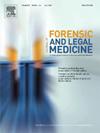Beyond the sexual assault: A comprehensive service model for forensic and medical care
IF 1.2
4区 医学
Q3 MEDICINE, LEGAL
引用次数: 0
Abstract
Background
To describe the characteristics of patients, the elements of medical care, evidence collection and service provision in a forensic medical sexual assault service.
Method
A retrospective observational study of 2329 patients aged from 12 years presenting after sexual assault over an 18-year period.
Results
Most victims were females of reproductive age. Perpetrators were males in 88 % with single assailants in 80.5 % of cases. Reported alcohol and substances consumed were 53.9 % and 14.2 % of cases respectively. Forensic and medical examination was undertaken in 75.1 %, with forensic evidence collected in 72.2 % and forensic photography in 23.2 %. On-site storage of the medical evidence kit occurred in 61.2 % of cases. Healthcare provision included STI screening (79.4 %), and emergency contraception (33.7 %). Delayed presentation after 7 days occurred in 11.4 % of cases, with over 86 % of cases seen within 7 days of the sexual assault. Most consultations (85 %) took under 3 h, 55.4 % of assessments were callouts out of business hours. Support persons attended the examination in 66.2 % of cases.
Conclusions
In a well-resourced setting, both medical and forensic elements of care can and should be provided following sexual assault. However, medical needs must take priority with consideration for the collection of forensic evidence. Some victims present to a medical setting after sexual assault which should minimise barriers to reporting. However, this service should be provided in a DNA minimal clinical space, by forensically trained clinicians ideally in an Emergency Department. Data collection and analysis are critical in auditing for continual service improvement.
超越性侵犯:法医和医疗护理的综合服务模式
描述性侵犯法医医疗服务中患者的特征、医疗护理、证据收集和服务提供的要素。方法对2329例年龄在12岁以上的性侵犯患者进行回顾性观察研究。结果患者以育龄女性居多。88%的施暴者为男性,80.5%的案件为单一施暴者。报告的酒精和物质消耗分别占53.9%和14.2%。进行法医和医学检查的占75.1%,收集法医证据的占72.2%,法医摄影的占23.2%。61.2%的病例现场存放了医学证据包。医疗保健提供包括性传播感染筛查(79.4%)和紧急避孕(33.7%)。11.4%的病例在7天后才出现症状,超过86%的病例在性侵犯后7天内出现。大多数咨询(85%)在3小时内进行,55.4%的评估是在营业时间之外进行的。66.2%的个案由支援人员参加考试。结论在资源充足的情况下,可以而且应该在性侵犯后提供医疗和法医护理。但是,医疗需要必须优先考虑法医证据的收集。一些受害者在性侵犯后被送往医疗机构,这应该最大限度地减少报案的障碍。然而,这项服务应该在DNA最小的临床空间内提供,最好是由经过法医培训的临床医生在急诊科提供。数据收集和分析对持续改进服务的审计至关重要。
本文章由计算机程序翻译,如有差异,请以英文原文为准。
求助全文
约1分钟内获得全文
求助全文
来源期刊

Journal of forensic and legal medicine
MEDICINE, LEGAL-
CiteScore
2.70
自引率
6.70%
发文量
106
审稿时长
57 days
期刊介绍:
The Journal of Forensic and Legal Medicine publishes topical articles on aspects of forensic and legal medicine. Specifically the Journal supports research that explores the medical principles of care and forensic assessment of individuals, whether adult or child, in contact with the judicial system. It is a fully peer-review hybrid journal with a broad international perspective.
The Journal accepts submissions of original research, review articles, and pertinent case studies, editorials, and commentaries in relevant areas of Forensic and Legal Medicine, Context of Practice, and Education and Training.
The Journal adheres to strict publication ethical guidelines, and actively supports a culture of inclusive and representative publication.
 求助内容:
求助内容: 应助结果提醒方式:
应助结果提醒方式:


